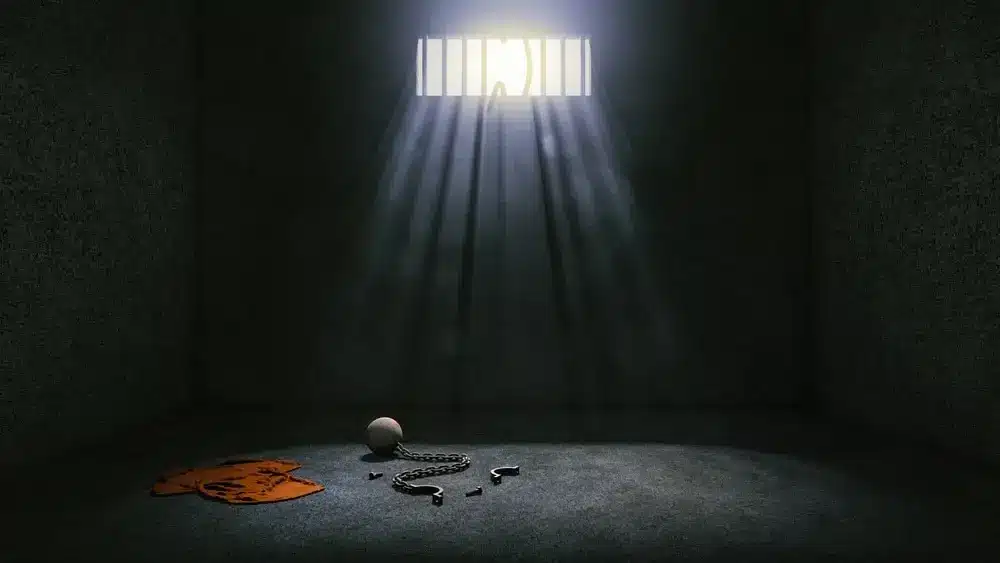

The struggle to overcome addiction and break free from its grasp is an arduous journey, full of challenges and setbacks. And for those who’ve experienced incarceration due to substance-related offenses, this struggle is further compounded by the risk of recidivism. A comprehensive addiction treatment program is a great tool to assist in reducing recidivism.
Recidivism, which is the tendency of individuals to relapse into criminal behavior after being released from incarceration or completing a period of treatment or rehabilitation, poses a significant challenge for those seeking to rebuild their lives.
Research has consistently shown a strong correlation between substance abuse and criminal behavior. According to one study, most people entering the criminal justice system have substance use problems or are using illegal drugs at the time of their arrest. Over 80% of inmates in local jails and state prisons said they had used an illegal drug, and 55% used drugs in the month leading to their arrest.
The sad part is that many of these people commit crimes to get money for drugs. In fact, 16.5% of inmates in state prisons said they committed crimes to get money to buy drugs. Others end up in prison because of the psychopharmacological effects of the substance they abuse. For example, drugs like meth or cocaine increase the chances of engaging in violent crime.

Recidivism is a major problem in the US. A longitudinal study by the DOJ that followed released inmates from 30 states found that:
Going by the numbers, it is evident that addressing recidivism is crucial in breaking the cycle of addiction and criminal behavior. And comprehensive treatment plays a pivotal role in achieving this goal.
Comprehensive treatment combines a range of interventions and support services that targets the physical, psychological, and social aspects of addiction. This holistic approach aims to address the root causes of addiction, promote sustained recovery, and ultimately decrease individuals' likelihood of criminal behavior. Let's explore the various components and therapeutic strategies involved in comprehensive treatment and how they contribute to reducing recidivism rates.
The first component of comprehensive addiction treatment is a thorough evaluation and assessment. This helps identify underlying issues that contribute to one’s use of substances. This includes:
These details allow for a tailored medical care plan that addresses the specific needs of the individual. Evaluation and assessment often happen after stabilization in substance abuse treatment. It can include physical exams and specific tests for diseases or disorders per the patient’s report.
Counseling identifies and addresses the psychological, emotional, and behavioral factors contributing to criminal behavior. It helps individuals develop healthier coping skills and strategies to manage their triggers and emotions. Counseling:
Counseling is essential to substance abuse treatment and often occurs alongside other interventions such as detoxification, inpatient treatment, or outpatient programs.

Comprehensive treatment recognizes that the journey to recovery does not end with completing a treatment program. Aftercare support is crucial for reducing recidivism rates. This support can include aftercare programs, sober living homes, support networks, and ongoing counseling sessions.
Continued guidance and assistance ensure that individuals are better equipped to maintain their sobriety, manage triggers and cravings, and navigate the challenges of everyday life without relapsing. A study found that inmates who joined continuing care after release had reduced recidivism.
Successful reintegration into the community is a significant factor in reducing recidivism rates. Comprehensive treatment includes programs focusing on community integration, such as vocational training, educational opportunities, job placement assistance, and housing support.
These programs help individuals rebuild their lives, establish financial stability, and regain a sense of purpose and belonging, which reduces the likelihood of engaging in criminal activities. According to a meta-analysis of programs that offer education to incarcerated adults, 43% of those who took part in education programs while incarcerated had a lower chance of re-offending than those who didn’t.
Comprehensive treatment considers the whole person rather than their disorder or illness. A person is made up of emotional, physical, environmental, and spiritual parts. It recognizes that individuals are complex beings with interconnected aspects of their lives and aims to treat the person as a whole rather than focusing solely on specific symptoms or conditions. The goal is to achieve balance and harmony within the individual by addressing all aspects of their well-being.
The holistic approach emphasizes the interconnectedness of the mind, body, emotions, and spirit, recognizing that imbalances in one area can affect other areas and contribute to various health issues or challenges. As shown above, the approach equips individuals with the necessary tools for sustained addiction recovery. From healthy coping mechanisms to stress management techniques to relapse prevention strategies, it empowers them to navigate challenges, make positive choices, and maintain their recovery over the long term.
Comprehensive treatment also emphasizes developing essential life skills like problem-solving, decision-making, and effective communication. This may, in turn, help reduce the risk of recidivism upon release. By prioritizing comprehensive treatment and support for individuals at risk of recidivism, we can make significant strides in breaking the cycle of addiction, reducing criminal behavior, and promoting healthier and more productive lives for those affected by substance abuse disorders.